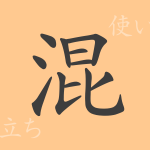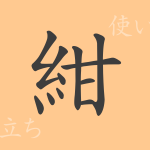In the Japanese language, many words symbolize emotions and traces of history. Among them, the kanji “痕(こん, kon)” holds a wide range of meanings, from physical marks to lasting impressions on a person’s heart. This article delves into the world of the commonly used kanji “痕(こん, kon),” exploring its origins and modern usage.
Origin of 痕(こん, kon)
The kanji “痕(こん, kon)” has been used since ancient times. It is composed of the character for “remains” (残(ざん, zan)) and the radical for “illness” (疒(やまいだれ, yamai-dare)). This combination gives the kanji its meaning of “marks left by illness.” There are various “痕(こん, kon)” around us, from those that disappear over time to those that remain forever.
Meaning and Usage of 痕(こん, kon)
The character “痕(こん, kon)” primarily refers to marks or traces left by something. It can describe not only physical marks but also psychological and emotional impacts. For example, “傷痕(きずあと, kizuato)” refers to scars on the skin, while “心の痕(こころのあと, kokoro no ato)” is used to express deep impressions or trauma left on the heart.
Readings, Stroke Count, and Radical of 痕(こん, kon)
“痕(こん, kon)” is one of the kanji with deep meaning in the Japanese language.
- Readings: The on’yomi (音読み) is “コン(kon),” and the kun’yomi (訓読み) is “あと(ato).”
- Stroke count: It consists of 10 strokes.
- Radical: The radical is 疒(やまいだれ, yamai-dare).
Idioms, Phrases, and Proverbs Using 痕(こん, kon)
Idioms and phrases containing “痕(こん, kon)” reflect its rich meanings. For example, “傷痕(きずあと, kizuato)” refers to physical scars, while “愛痕(あいこん, aikon)” signifies traces or memories of deep love. “痕跡(こんせき, konseki)” means evidence or traces of something that existed, a term often used by detectives.
Conclusion on 痕(こん, kon)
The kanji “痕(こん, kon)” has the power to express not only visible marks but also invisible emotional movements. In our daily lives, we encounter many “痕(こん, kon)” and leave new ones. Understanding the profound meaning embedded in this single character allows us to reflect on the emotions and history behind words.

























